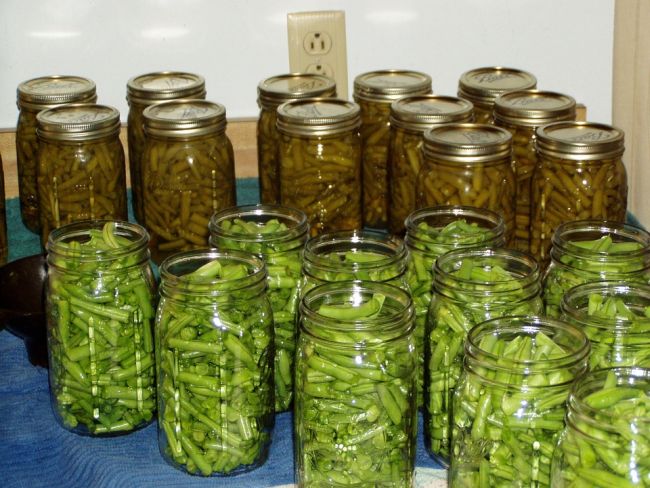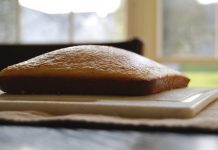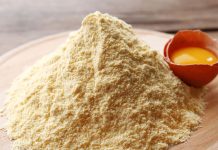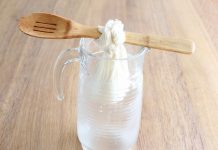Today I’m sharing with you all a very important post–how to de-gas beans. And this is about more than just stopping bad smells–this is about health.
Of course, good gut health is key to your body getting the nutrition you need. If you don’t digest your food well, then you can’t use the nutrients from it. Probiotics are key to having good gut health, but so is getting rid of things like candida, heavy metals, and taking care to improve liver health so your body can function optimally.
However, preparing your foods the right way to encourage proper digestion is also important–and that including things like knowing how to soak grains, how to soak nuts, and this post on how to de-gas beans.
Beans, beans, the magical fruit….
It’s a funny little ditty, but a not so funny reality.
Some people try to just eat fewer beans, and some avoid them completely, while others buy things like Bean-o and dump it on their food while eating.
Well, here is a better, and I must say, a more effective (and much less expensive) solution to your bean-eating problems.
Related: 11 Unexpected Ways To Earn Money In A Depression
Digestion and Beans
Having good digestion is key to having good health, whether you or a loved one has chronic health conditions or not.
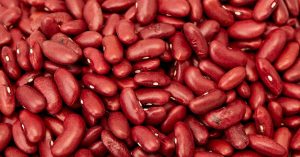

We have been, for the past number of years, working on our whole family’s digestion by learning more about digestive enzymes, probiotics, fermentation of foods and soaking beans, nuts, and seeds, and even soaking grains.
It’s all part of the walk towards better health.
There are so many great things about beans, that it is a good idea to try to add more of them to your diet. However, most people find that when they add too many of them to their diet that they can’t digest them well.
More Digestion-Boosting Tips
I’ve mentioned a few of these already, but these are some other topics regarding digestion that might be of interest.
- How to Boost Nutrition with a Dehydrator
- How to Soak Grains
- How to Soak Nuts and Seeds
- What is the Best Probiotic?
Bean Recipes
Here are some of our favorite bean recipes (surely there will be more in the future!)
- Pizza Hummus
- Savory Hummus – sesame-free!
- Fast and Yummy Bean Dip
- Bean Fudge
- Buckwheat Lentil Crackers
- Lentil Recipes – from Breakfast to Dessert
- Indian Lentils
Benefits of Beans
Just in case you wondered why adding more beans to your diet is a good thing to consider, here are some great reasons.
Beans are nutrition powerhouses.
Beans are very high in fiber, protein, and complex carbohydrates.
Beans are cheap, cheap, cheap.
Even the price of heirloom organic beans pales in comparison to that of meat. Now, I am not saying that you shouldn’t eat meat, but beans sure can help you stretch your food budget.
And who doesn’t need a bit of stretch these days?
Beans have a super-long shelf life.
In these days of concern about inflationary food prices with folks storing up food for leaner days ahead, beans are a logical choice. They may take longer to cook as they age, but they do not spoil.
Related: Remedies for Poison Ivy Rash
Why Do Beans Cause Gas?
Beans cause gas because the have sugars in them, called oligosaccharides, that the body can’t break down completely. Oligosaccharides are larger molecules than other sugars but the human body doesn’t have enzymes to break them down in the small intestine.
So the oligosaccharides travel to the large intestines undigested and they are then digested there, which causes intestinal gas. For the same reason, if other foods end up in the large intestine without being digested, they can cause gas as well.
To prevent gas when you are eating beans, you can eat beans as they are and take some of the enzymes that digests oligosaccharides with your meals. The enzyme is derived from the fungus Aspergillus niger and is sold under the name of Beano as well as under other names.
If you don’t want to spend a huge amount on Beano, you need these tips on how to de-gas beans.
Beans, Digestion, and Our Family
In our house this was a huge problem. I used to be vegan, and my wife basically was as well. She will not eat egg dishes (anything where you can really tell that there is an egg in it like this Dairy-free Quiche or this Sweet Potato Frittata–those are just a total no-go with her). She also didn’t like meat much, and it really made me feel pretty queasy to prepare meat.
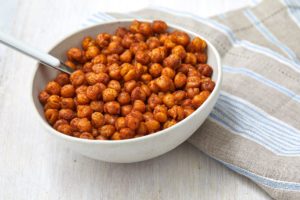

We used to eat beans literally at almost every meal. Even dessert–it’s the truth!
This Sesame-free Hummus was a real fave, and ground beef in any recipe would quickly be replaced with beans.
One of our favorite snacks was Roasted Chickpeas. They’re great, but not much fun to make in the summertime.
And my Bean Fudge was often found on our table as a healthy dessert.
Gradually we have moved away from our “leaning vegan days”, though we still don’t have a kitchen laden with eggs and dairy. However, even though we have been moving lower-carb and aren’t eating as many beans these days, we do still love them, meaning that knowing how to de-gas beans is still something that is crucial for us.
Time-Saving Tips for Beans
1. Cook beans in bulk
One easy way to save time cooking beans is to cook some ahead of and store for future use. Read my tips on How to Store Cooked Beans.
2. Cook for two meals at once
It is a bit of extra work to cook beans rather than just opening up a bunch of cans, but
Make up a super-duper large batch of beans and make some of my great Bean Fudge. It’s a great no-bake dessert, perfect for summer days (and busy winter ones too!)
3. Some beans do not need to be pre-soaked
These varieties are, of course, great for busy days (or days when you just plum forgot to plan for dinner!)
Bean varieties that do not need soaking:
lentils – red, green, French (they take a bit more cooking time)
black-eyed peas
mung
split peas (green or yellow)
soldier
and a snow cap.
I’ve tried all of the above except for snow cap and soldier. Hmmm..gotta get working on that!
How To De-Gas Beans
1. Soak (overnight) or for at least 8 hours. Just cover the beans in filtered water, covering them with at least enough water so you can touch the beans with your middle finger’s tip and have the water cover your second knuckle. If you are planning to have beans for dinner, you can always start soaking them in the morning when you wake up and then cook them starting 8 hours later.
2. Alternatively, speed soak in a pressure cooker (you can soak beans in only 2 minutes (yes, that’s right, I said 2 minutes!!) in one of these amazing kitchen tools. You just cover the beans with filtered water (as instructed above) and cook on high for 2 minutes.
3. Drain and rinse the beans
4. Cook the beans with any of the following:
- ajwain or epazote (See my post on Ajwain and Epazote).
- ginger
- cumin
- fennel
- asafoetida (an Indian spice that is a good substitute for onion or garlic)There aren’t any real measurements that I could find for any of the other seasonings besides ajwain and epazote, but we typically cook 6 cups of dried beans at a time and use 1 tsp fennel and 1 tsp ginger powder and our beans are pretty “tootless” :).For ajwain, you use 1/2 tsp for every 2 cups of cooked beans (or 2/3 cup dried)
For epazote, use 1 Tbsp for every 1 cup dried beans.
For best results, boil the beans first, then skim off the scum/foam that builds up on top and then add the spice(s) in the correct proportions.
If you do all of the above, you will find that any tooting will for sure be down to a minimum. And there just may be no toots at all.



